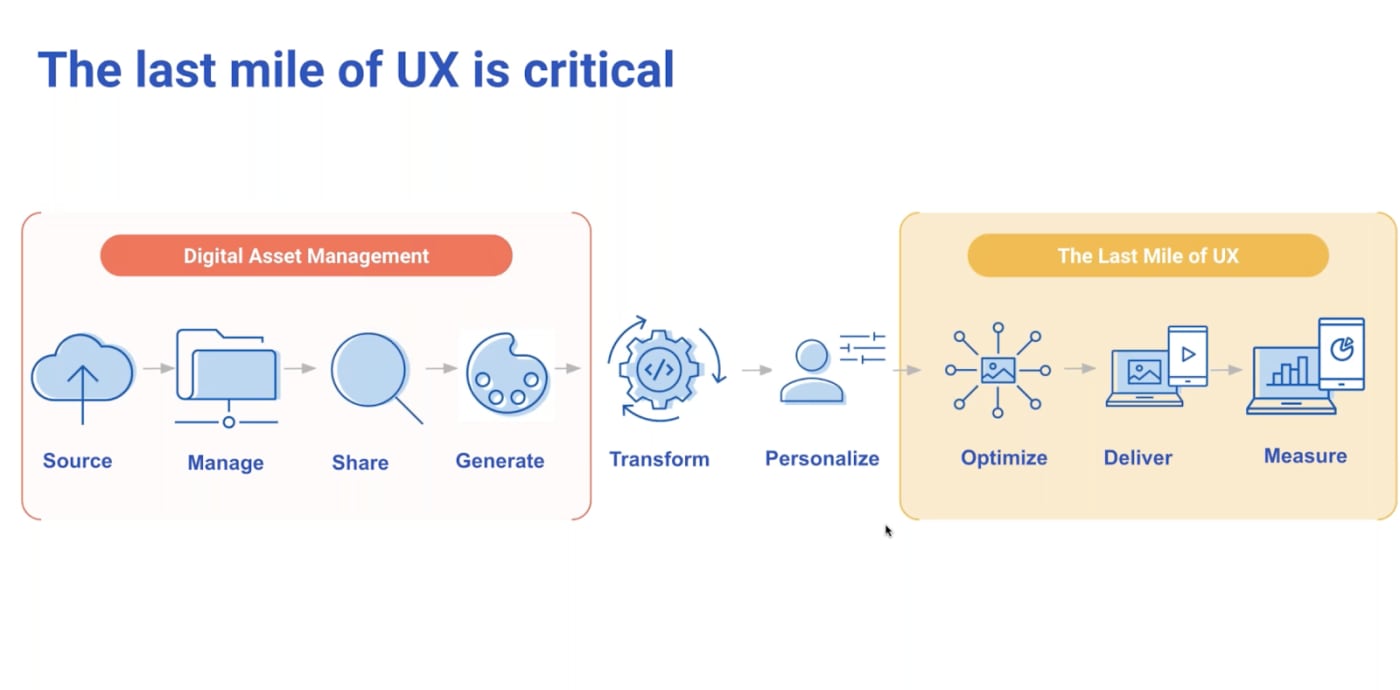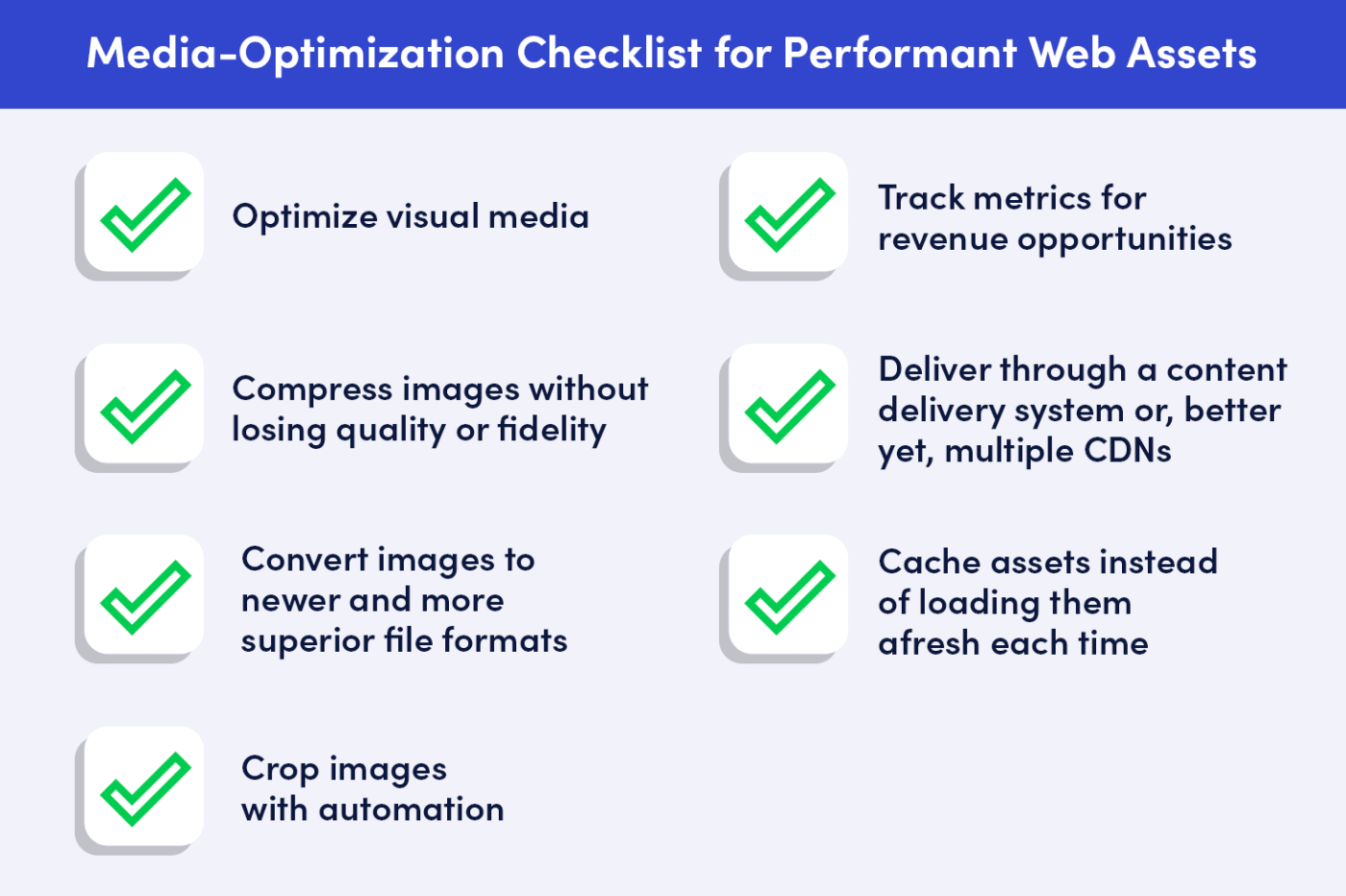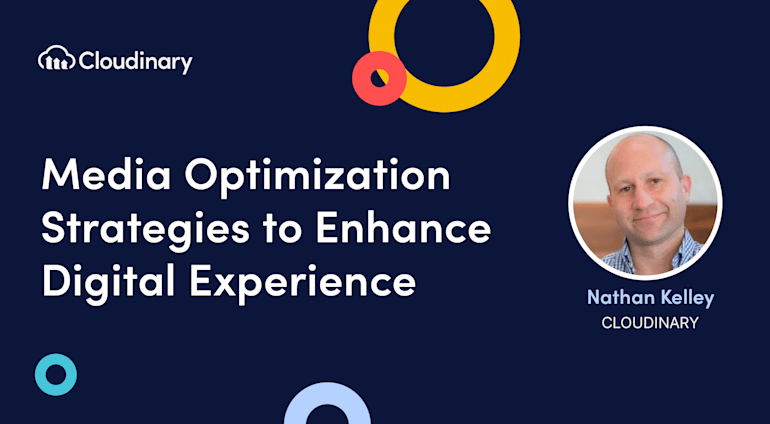Did you know that humans process imagery 60,000 times faster than text? In fact, 90% of the information our brains process is visual, which makes it seem a no-brainer—pun intended—that brands are connecting with consumers through visual content online. However, adding media assets like images and videos to websites comes with a tradeoff: the more media, the heavier the site, which results in a noticeable slowdown in page loads and a reduction in content quality.
On June 16, I hosted a webinar entitled Media Optimization Strategies to Enhance Digital Experience with Henry Stewart Events. During that session, I explained why e-businesses must understand the critical role that the quality of digital experience plays in boosting web performance, engaging with consumers, and, ultimately, raising brand recognition. Below is a recap.
Be Sure to Complete the Media Lifecycle
The media lifecycle involves many steps, from creation to final delivery. As shown in the chart below, a separation often exists between the typical digital asset management (DAM) pieces (source, manage, share, and generate) and the last mile of the user experience (optimize, deliver, and measure). Your goal is to connect those two entities with a media-experience platform like Cloudinary.

Web Performance Directly Affects the Bottom Line
Unoptimized images are often the main cause of page bloat. According to HTTP Archive, a look at the 90th percentile of the distribution of page weight showed that images accounted for almost 75% of the total. That doesn’t even account for online videos, a medium that will make up more than 82% of all internet traffic by 2022.
Why is page weight important? Well, Google determined that 40% of visitors would abandon a site if a page takes more than three seconds to load. That’s a huge loss in conversions and sales due to poor web performance.
Search engine optimization (SEO) also plays an important role here. Recently going into effect are three Google metrics called Core Web Vitals—Large Contentful Paint (LCP), First Input Delay (FID), and Cumulative Layout Shift (CLS)—which will continue to evolve with time. Optimizing webpages to align with those recommended metrics ensures that your website not only ranks well in search results, but also delivers a positive user experience that will keep visitors engaged.
Automation of Web Performance Is Key
Creating engaging web experiences today involves strategizing for the best of both worlds: you want to have all the visual and compelling content that consumers love to see, but you also need for websites to perform at the most efficient levels possible. Prioritizing one over the other doesn’t work in today’s competitive landscape.
To achieve both of those results with ease and efficiency, see the media-optimization checklist below, which lists the actions you must take to enhance web performance throughout the entire media-asset lifecycle: from creation to the final touchpoint of the user experience.

As well, quality-led optimization is important. You must answer these four questions for each of your images:
- Can you set compression or quality at a specific numerical value?
- What are the considerations for the image content, e.g. range of colors, gradients, etc.?
- In what size do you intend to use the image, e.g. thumbnail versus primary product image?
- How much traffic is the image likely to get?
Manually performing those steps in the checklist is costly and time consuming. Multiply that by all the devices, screen sizes, browsers, and connection speeds to optimize for and it becomes extremely overwhelming, especially given that there are approximately 24,000 different Android devices alone. It’s impossible to optimize thousands of assets manually and in a timely manner, let alone that the metaphorical goal post is always moving.
Automation enables you to scale faster, pivot more readily, and innovate. With AI, teams can create and maintain compelling visual content that engages and converts customers, time and time again.
Grow Your Business With Visual Online Experiences
As challenging as it is to deliver high-quality visual experiences, you can do so with the right platform and technology. Cloudinary’s Media Optimizer can help you achieve quality-led optimization by automatically delivering images and videos in the format and quality that suit all the end-user devices, browsers, and connection speeds. In other words, with Cloudinary, you can easily and efficiently complete the entire media lifecycle.
For more in-depth insights on how to grow your business by delivering a captivating user experience through fast web performance, view the full webinar. To learn more about how Cloudinary can help you achieve your visual-media goals, please contact us.





